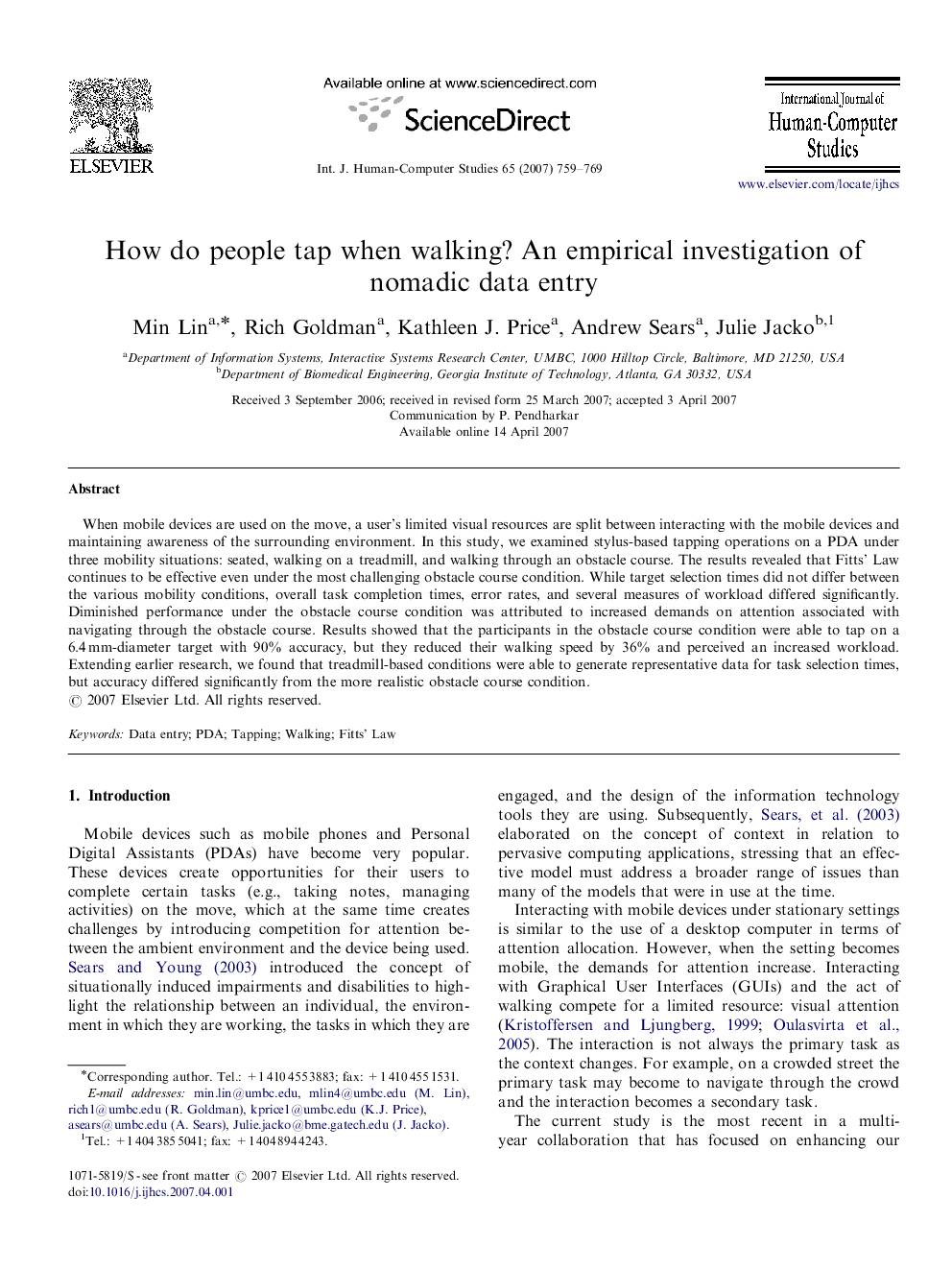| Article ID | Journal | Published Year | Pages | File Type |
|---|---|---|---|---|
| 401076 | International Journal of Human-Computer Studies | 2007 | 11 Pages |
When mobile devices are used on the move, a user's limited visual resources are split between interacting with the mobile devices and maintaining awareness of the surrounding environment. In this study, we examined stylus-based tapping operations on a PDA under three mobility situations: seated, walking on a treadmill, and walking through an obstacle course. The results revealed that Fitts’ Law continues to be effective even under the most challenging obstacle course condition. While target selection times did not differ between the various mobility conditions, overall task completion times, error rates, and several measures of workload differed significantly. Diminished performance under the obstacle course condition was attributed to increased demands on attention associated with navigating through the obstacle course. Results showed that the participants in the obstacle course condition were able to tap on a 6.4 mm-diameter target with 90% accuracy, but they reduced their walking speed by 36% and perceived an increased workload. Extending earlier research, we found that treadmill-based conditions were able to generate representative data for task selection times, but accuracy differed significantly from the more realistic obstacle course condition.
